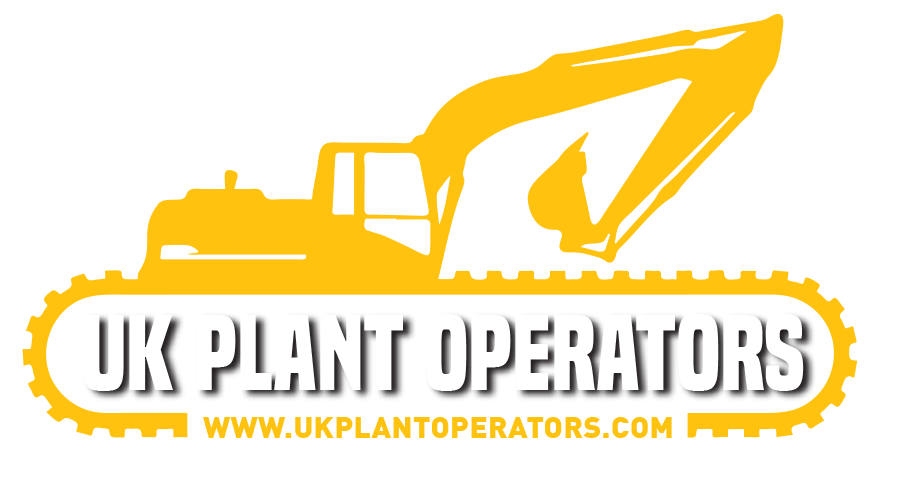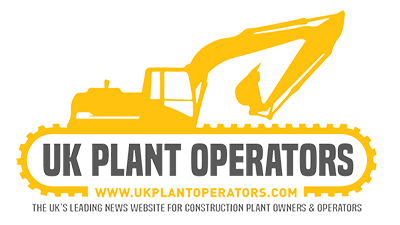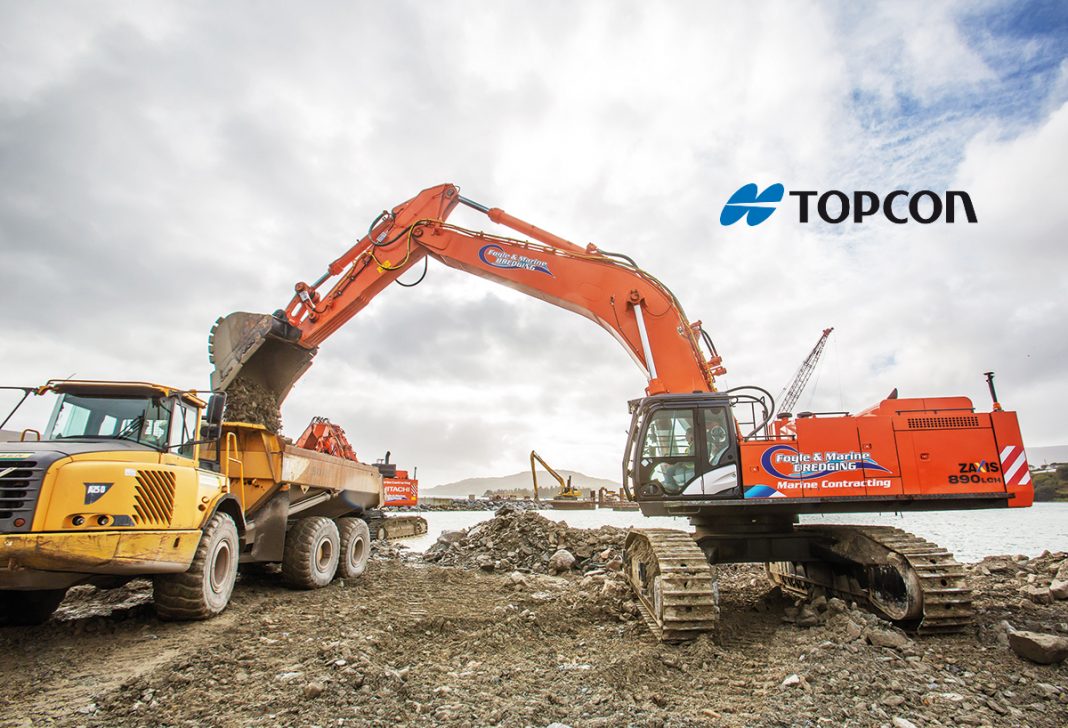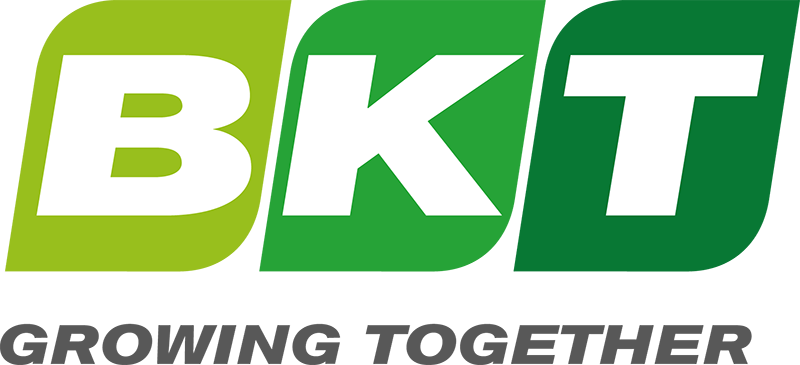![]()
You don’t just slap a name like Grizzly Bear 2.0 on any old machine. Something bearing this kind of tag would have to be worthy. Well, Gary Ashe finds out that, without any doubt, the beast (understatement) that is the Topcon-equipped Hitachi EX 1200 earns its title.
I took the long trek to Castletownbere, Co. Cork on the far reaches of southwest Ireland (next stop America) to check out one of the largest excavators in the UK and Ireland at present, the modified Hitachi EX 1200 and its not-so-much-smaller brother, the Hitachi ZX 890 LCH.
These are formidable machines in their own right as standard, but both have been specially modified for the rigours of marine life.
What makes the Hitachi EX1200 so much different from the standard model is the Triplex Boom which utilises two EX1900 rams in addition to the EX1200 standard rams for increased power at 30 meters reach and 20 meters digging depth. With an impressive load curve for handling rock armour and precast concrete units up to 13 tonnes, the machine truly lives up to its name, ‘Grizzly 2.0’.
A modified wider undercarriage also provides a greater degree of stability, achieved by rotating the H-frame 90 degrees and bolting it to the top of two specially manufactured lengthening beams, resting on the track frames.
High-tech heft
From a technology standpoint this excavator has a trump card up its sleeve. Both the EX 1200 and the Zaxis 890 are specially fitted with Topcon machine guidance systems.
These systems use several sensors along the boom right down to the bucket to send detailed data to two receivers mounted at the back of the excavator, which in turn sends a signal to a touchscreen display in the cab.
After a five-minute calibration procedure, the operator can work underwater while seeing in precise detail how much material is being moved and exact positioning the bucket is at.
The excavator’s standard main lift rams (plus a third one) connect the main and intermediate booms. The stick continues to use the factory-fitted cylinder, but the bucket linkage has been swapped for that of a ZX870.
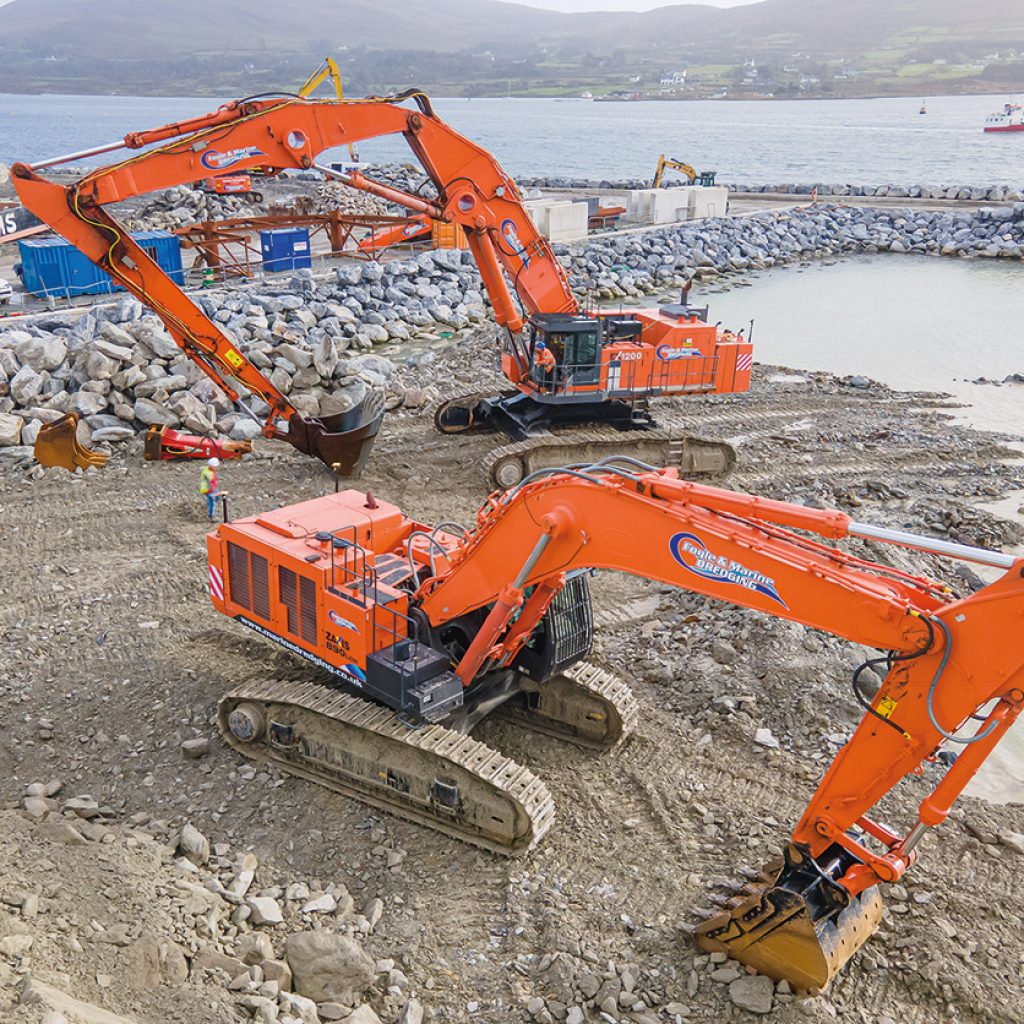
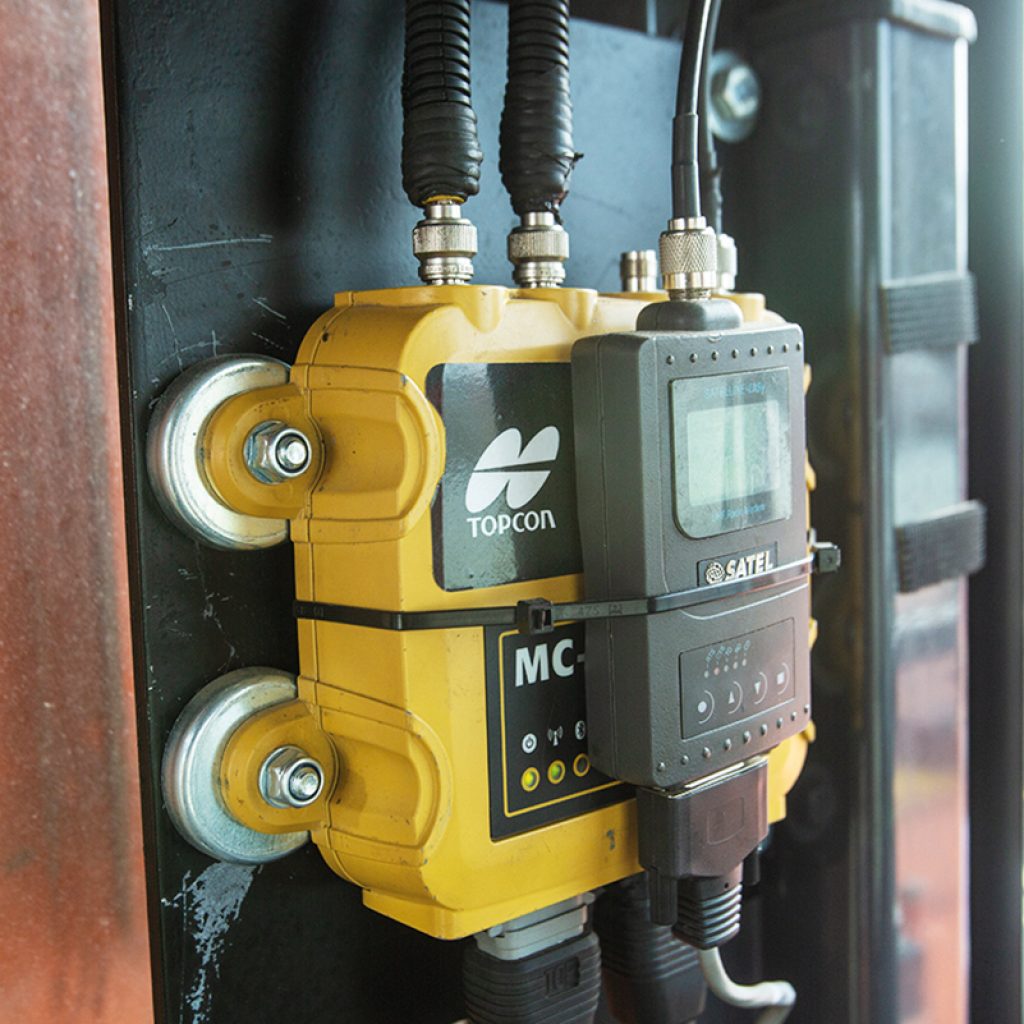
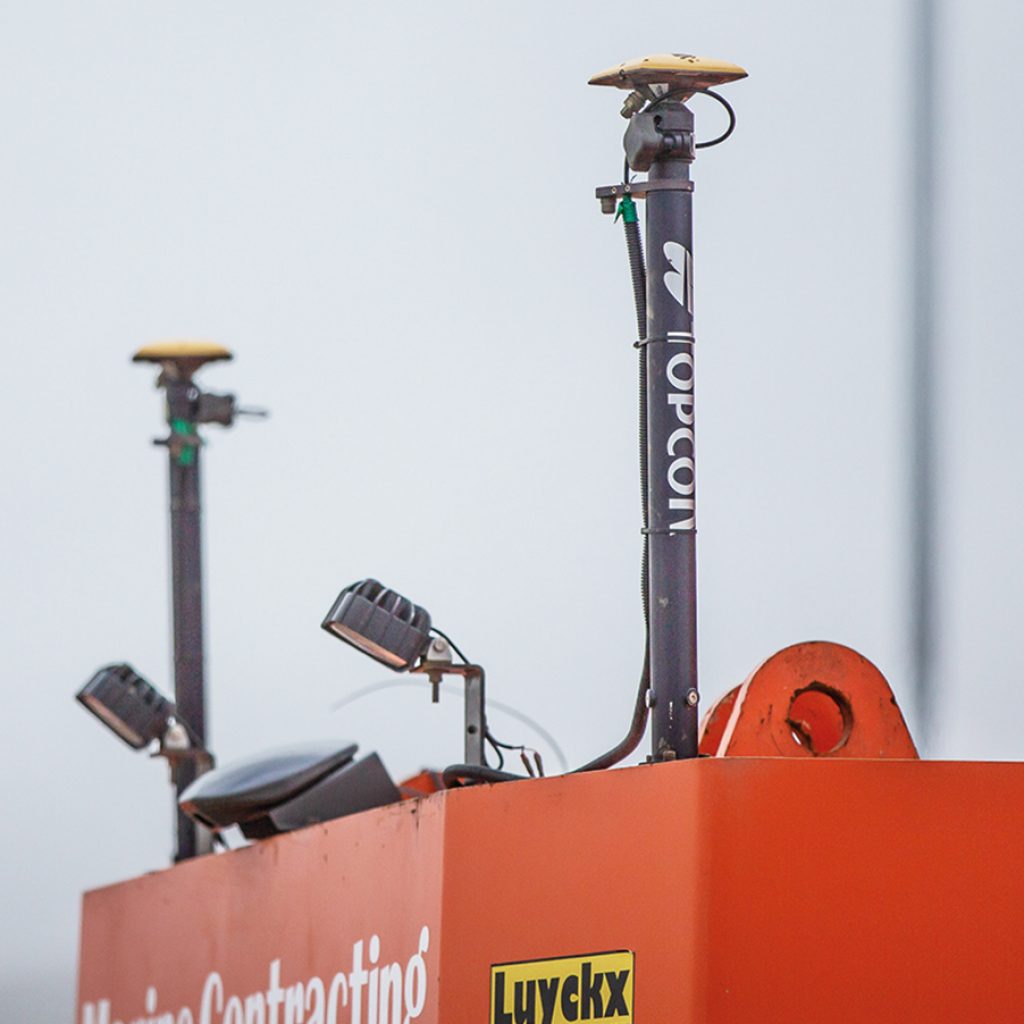
Setting the standard
I spoke to Foyle and Marine site manager Richard McGrath about his background and the Grizzly 2.0.
“I am 37 years old and I am a site manager at Foyle and Marine Dredging. I have been privileged to find a career in things I had a passion for as a child, which are excavators – which I have operated from a very young age – heavy plant and the ocean. I’ve been working in the marine industry for 14 years and have completed many marine projects throughout the UK and Ireland”, he said.
Richard spoke highly of the Hitachi machines. “My first experience of Hitachi machines in full time employment was on a Dash 2 Hitachi on a road construction job in Belfast 20 years ago.
Even back then, after operating many of the different brands Hitachi was by far the nicest to operate. The new next gen Hitachi machines of today have set a tone throughout the industry.
The benefits of these machines are huge for both the companies that run then and the operators that use them. The production rates of these machines are the best in the business, along with the machines being very reliable and fuel efficient. You can see how Hitachi are so popular”, he said.
No base station needed
Richard went on to outline the benefits they have found from using the Topcon system. “We have started using the new Topcon machine guidance system, which was fitted to our largest track machine – Grizzly 2.0. The feedback from the operators has been really positive, with how user-friendly it is along with the added bonus of not needing to use a base station, which in the past could be problematic”, he said.
“We use the new Topcon system for placing rock armour, dredging, underwater rock breaking, marine demolition and many other marine and civil duties.”
He continued, “Our newest giant, the Hitachi EX 890, has also been fitted with the new Topcon machine guidance system. This 90-tonne machine is our mid-range, with our smallest range being 50-tonne.”
Foyle and Marine will keep choosing Hitachi as the fleet is updated, said Richard. “The company’s investment in these next generation machines is set to continue”, he said.
Richard recommends following the Foyle and Marine LinkedIn page for updates on new projects and fleet additions.
The captain’s take
I also had a chat with the EX1200’s current operator Ed Guy. “It’s a nice smooth machine. It’s easy to drive, its noisy like any 1200, but apart from that it’s great. The cab is nice and big, plenty of room”, he said.
I asked him how he was finding the Topcon Positioning system.
“It’s 110 percent, it’s easy enough to use, you just follow the design that it’s giving you and that’s it”, he replied.
Accurate and safe
The EX 1200 was working away dipping its huge bucket into the Atlantic and moving material according to the design.
The impact the Topcon 3D solution has on the excavation effort is immediate and measurable. From the elimination of costly overcutting/undercutting, to the operator’s ability to receive project changes in real-time, to the generation of volume reports, this is the real-world benefit of the excavation project.
The advantage of these devices is that you can accurately position all the materials in the right place. This also solves the problem with the divers. The Topcon equipment allows a gain in production time and reduces the need for underwater teams which are quite costly and not always the safest option.
“Once you’re underwater you can’t see anything, but thanks to the Topcon equipment, you can. The georeferenced positioning of the equipment is very useful, especially on the long-reach excavators”, said Richard.
Machine control tells the team the position of the bucket, the height, and the design.
This GPS system provides all the information necessary to carry out the job. The Topcon systems were provided by Topcon Positioning Ireland, based in Dublin.
The nature of the beast
The modified Hitachi EX1200, powered by a standard six-pot 760hp Cummins QSK23-C engine driving standard hydraulic pumps, takes pride of place in the company’s seven–strong fleet of Hitachi long reach excavators.
Acquired from the Aertssen Group, based in Belgium, which boasts a massive fleet of almost 2,000 excavators, many of them Hitachis, the ‘Grizzly 2.0’ is certainly a monster of a machine.
It was primarily designed for Aertssen by specialist machinery company Luyckx to lift and place 10-tonne rock armour blocks 27m from the center to its slew ring.
The air conditioned, pressurised cab itself remains untouched from the standard EX1200 machine and provides the operator with a comfortable working environment that includes a weight-adjusting cushioned seat, complete with customised suspension settings.
The cab rests on 6-point, support type, fluid-filled elastic mounts. These significantly reduce shocks and vibration for operator comfort and improve cab durability.
These mounts can easily be replaced from underneath the cab floor bed without needing to lift the cab.
A dial type multi-functional controller makes operation easy and intuitive. Frequently used switches are located on the right-hand side console panel within easy reach of the operator, while a multi-functional display provides key machine information, performance indicators, and on-board troubleshooting functionality with an integrated dial switch interface and 7-inch, high definition, colour, multi-monitor screen; the display is fitted with an LED backlight to improve clarity and reduce reflective glare.
A rear-view camera is located on the machine counterweight so the operator has a wider field of view when checking rearward on the cab’s LCD monitor. This enhances safety during both swing and travel. The operation status icons and rear-view monitors can be displayed simultaneously without the hassle of having to switch between displays.
And let’s not forget the newer ZX 890 LCH which was also pitching in on the effort the day I visited. This 2019 model weighs in at 90 tonnes and is also fitted with the Topcon system which makes it too, a very capable tool for the marine works at hand.
It has a 382kW, 15.68-litre Isuzu water-cooled engine. The arm of the ZX890LCR-6 has thicker side frames and plates, as well as other robust components, to protect against damage during digging and loading of limestone and crushed stone. This helps to enhance the machine’s durability for demanding sites.
New harbour
I spoke to Foyle and Marine Director Stephen McCormack about his business and the current project in Castletownbere.
“We started out around 2009 with just an FX 150 doing a bit of marine works. We then got a Zaxis 450, a backhoe dredger and a couple of tugboats and the business just grew from there really”, he said.
The current project on Dinish Island, where both the EX 1200 and the ZX 890 are working involves the construction of a new harbour, two new breakwaters east and west, a new quay wall, and a deep-water berth. The actual site the machines were working on the day I visited was a new small-craft berth. The development is being overseen by contractor Sorensen Civil Engineering Ltd. The guys expect to be finished up there around January, and then it’s on to the next gig.
